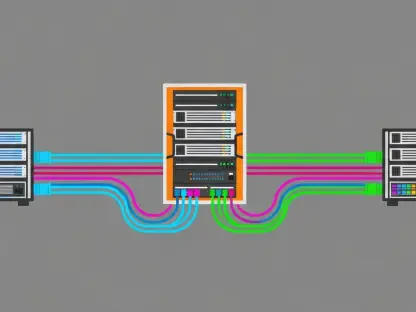Recent years have observed an intriguing trend in the tech industry – a notable shift from public cloud environments back to on-premises infrastructures. This reversal, termed “cloud repatriation,” is spurred by companies seeking cost savings and enhanced operational efficiency. Enterprises initially embraced cloud solutions for reduced IT expenses, but the escalating cloud costs and complexities have driven many to reconsider their strategies. Among the notable examples is GEICO, a prominent player in the insurance industry, which decided to repatriate several workloads due to surging costs and reliability challenges. This decision reflects a growing realization within enterprises about the true financial and operational implications of cloud services, prompting a re-evaluation of their technological approach.
Drivers of Cloud Repatriation
Higher-Than-Anticipated Costs
One of the primary reasons for GEICO’s decision to repatriate workloads is the significantly higher-than-anticipated costs associated with public cloud services. Companies across various sectors, especially those dealing with heavily regulated environments like finance and insurance, are facing this challenge. The storage and management of vast amounts of data in public clouds often lead to prohibitive expenses, particularly because these industries require long-term data retention for compliance purposes. For GEICO, the financial burden of maintaining data in the cloud outweighed the initial benefits, driving them towards an on-premises solution that promises more predictable and controlled costs.
This trend highlights the necessity for a strategic approach to cloud adoption. Simply lifting and shifting workloads to the cloud without proper optimization and alignment to cloud-native capabilities can result in operational inefficiencies and spiraling expenses. Organizations are now more inclined to adopt a nuanced strategy that combines the perks of public clouds with the benefits of private infrastructure. Such hybrid environments enable enterprises to maintain greater control over their data while mitigating costs and improving service reliability. Ultimately, this shift represents a more mature and informed approach to leveraging cloud technology, aligning with specific business needs and financial constraints.
Increased Reliability Challenges
Reliability is another crucial factor influencing the cloud repatriation movement. Enterprises initially flocked to cloud providers with the promise of enhanced uptime and service availability. However, experiences like GEICO’s reveal that reliance on public clouds can also introduce reliability challenges. Outages and latency issues in cloud services have led companies to question the dependability of these solutions for mission-critical workloads. In scenarios where downtime can have significant financial repercussions, businesses are reevaluating the wisdom of entrusting such critical functions to public cloud platforms.
In response, many organizations are opting for a diversified approach, incorporating both on-premises infrastructure and cloud services to ensure greater resilience and reliability. By repatriating certain workloads, companies can benefit from the high availability and performance that dedicated hardware often provides. Additionally, this strategy allows for better customization to meet specific operational requirements, further enhancing reliability. The emphasis on a balanced and tailored approach to infrastructure reflects a broader recognition of the complex and dynamic nature of today’s business environments, necessitating flexible and robust technological solutions.
Strategic Cloud Adoption
Leveraging Cloud-Native Capabilities
While cloud technology has proven effective for many enterprises over the past fifteen years, there is a growing acknowledgment of the need for a more strategic approach to cloud architecture. Instead of merely lifting and shifting existing workloads into the cloud, companies are encouraged to tailor their applications to leverage cloud-native capabilities fully. This involves optimizing applications to benefit from the scalability, efficiency, and automated management features that cloud platforms offer. By building applications specifically designed for the cloud, organizations can achieve greater performance and cost-effectiveness.
This strategic shift also emphasizes the importance of hybrid environments, which integrate public clouds with private infrastructure. Hybrid setups allow businesses to select the most suitable platforms for different workloads, optimizing costs and performance accordingly. This approach not only enhances data control and security but also ensures that organizations can scale resources dynamically to meet changing demands. By strategically adopting and integrating cloud-native capabilities with on-premises infrastructure, enterprises can create a robust and adaptive IT environment that aligns with their unique operational needs and financial goals.
Open Source Technologies
The utilization of open-source technologies such as Kubernetes for container orchestration and OpenStack for private cloud deployments represents a viable alternative to traditional public cloud services. These technologies provide companies with the tools to modernize their infrastructure, minimize dependency on specific cloud providers, and achieve greater flexibility and control. Kubernetes, for example, enables organizations to efficiently manage containerized applications, ensuring seamless scalability and portability across different environments. On the other hand, OpenStack empowers businesses to build and operate their private clouds, offering a customizable and scalable alternative to public cloud platforms.
However, the deployment of these advanced technologies is not without its challenges. While leveraging containers can significantly enhance efficiency, it also introduces additional costs, especially when implemented on new infrastructure. Companies can mitigate these expenses by deploying them on pre-owned or existing hardware, thereby achieving the benefits of modernized infrastructure without incurring excessive costs. This hybrid approach of integrating open-source technologies provides businesses with a flexible and cost-effective solution to meet their evolving IT needs, ultimately paving the way for comprehensive and strategic cloud adoption.
The Broader Re-Evaluation
Incorporating Operational Costs and Compliance
The cloud repatriation trend underscores a broader re-evaluation of technological infrastructure by businesses. It highlights the importance of incorporating operational costs, compliance requirements, and specific business needs into the design of IT systems. The experiences of companies like GEICO have demonstrated that an indiscriminate adoption of cloud computing can lead to high operational costs and unanticipated challenges. The true cost of cloud services often extends beyond immediate financial expenses, encompassing aspects such as long-term data storage, regulatory compliance, and service reliability.
By repatriating workloads to on-premises infrastructure, businesses can achieve greater control over their operational costs and compliance measures. This approach allows companies to tailor their IT environments to meet specific regulatory requirements and business needs, ultimately enhancing efficiency and reducing financial burdens. The trend towards cloud repatriation reflects a more informed and strategic approach to infrastructure design, where the unique needs of each organization are prioritized and addressed comprehensively. It emphasizes the importance of understanding the full spectrum of cloud adoption implications and integrating these insights into business strategies.
Future Prospects and Call to Action
GEICO’s decision to bring back workloads in-house stems from unexpectedly high costs tied to public cloud services. Many companies, especially those in regulated fields like finance and insurance, face similar issues. Storing and managing vast amounts of data in the cloud can become prohibitively expensive, especially since these sectors need long-term data retention for compliance. For GEICO, the financial strain of using the cloud overshadowed the initial benefits, prompting a move to an on-premises solution with more predictable and controlled costs.
This situation underscores the need for a strategic approach to cloud adoption. Simply moving workloads to the cloud without proper optimization can lead to inefficiencies and rising costs. Businesses are now leaning towards a hybrid strategy, blending public cloud benefits with private infrastructure advantages. This hybrid setup allows organizations to keep tighter control over their data, reduce costs, and enhance service reliability. This shift reflects a more mature, informed approach to utilizing cloud technology, tailored to specific business needs and financial limitations.









